28.06.2023
Business travel has become an integral part of many professionals’ lives, enabling them to expand networks and explore new opportunities. However, it also exposes travelers to various cyber risks that can compromise sensitive data and business operations.
In this comprehensive guide, we will examine the world of cybersecurity for business travelers, providing valuable insights and practical tips to ensure data protection while on the go.
The Cyber Risks of Business Travel
Traveling on business opens up both individuals and organizations to countless cyber risks, including vulnerabilities associated with public Wi-Fi connections, the risk of device theft, weak password security, compliance issues, insecure email traffic, and unsecured file-sharing platforms.
These risks can lead to unauthorized access, data breaches, and severe financial and reputational consequences if not properly addressed. Below we outline those risks in further detail so that you may avoid them:
Public Wi-Fi Connections
These networks, often found in hotels, airports, and coffee shops, are often unsecured and easily exploited by cyberhackers. Connecting to these networks puts sensitive data at risk of interception, allowing cybercriminals to steal login credentials, financial information, and other confidential data. It is essential for business travelers to exercise caution and avoid transmitting sensitive information or accessing critical accounts while connected to public Wi-Fi.
Device Theft
The loss or theft of laptops, smartphones, or tablets not only results in financial loss but also grants illicit access to valuable company information. Cybercriminals may exploit stolen devices to gain access to sensitive data, compromise corporate networks, or launch phishing attacks against colleagues and clients.
Implementing physical security measures such as using laptop locks and keeping devices within sight can help deter theft while encrypting data and enabling remote wiping capabilities can mitigate the risks associated with device loss or theft.
Password Security
Weak or reused passwords can provide easy access to unauthorized individuals. Implementing strong, unique passwords across all devices and accounts adds an extra layer of protection. Additionally, enabling two-factor authentication (2FA) enhances security by requiring an additional verification step.
Compliance
It’s important to ensure that personal and business data remain compliant with relevant laws, such as the General Data Protection Regulation (GDPR). Implementing encryption protocols and secure file storage solutions helps maintain compliance and mitigate risks.
Insecure Email Traffic
Business travelers must be careful when using public or unsecured networks to send sensitive information via email. Implementing end-to-end encryption, using secure email providers, and avoiding opening suspicious attachments or clicking on unknown links are vital precautions to protect against email-based attacks.
File Sharing
File sharing can introduce serious security risks. It’s critical to utilize secure file-sharing platforms that encrypt data both in transit and at rest. It’s advisable to implement access controls and permissions to restrict file sharing to authorized individuals only. Also, regularly reviewing and updating file-sharing policies can also help prevent evolving cybersecurity threats.
Cybersecurity Tips for Business Travelers
As we mentioned above, cybercriminals are constantly targeting business travelers, seeking to exploit vulnerabilities in their devices and steal sensitive information. Therefore, it is imperative for business travelers to be well-equipped with effective cybersecurity tips and best practices to safeguard their valuable data and protect their digital assets while on the move.
Here are some simple yet effective things you can do to help keep the hackers at bay:
Lock Your Screens
This simple yet crucial step helps prevent unauthorized access to private or sensitive information. By enabling screen locks, such as passcodes, PINs, or biometric authentication (fingerprints or facial recognition), business travelers can create an additional layer of security that ensures that data remains protected even if their device falls into the wrong hands
Use Public Wi-Fi Sparingly
Public Wi-Fi networks found in hotels, airports, and coffee shops are infamous for their lack of security. When connecting to public Wi-Fi, business travelers expose their data to potential interception by hackers.
As such, it is highly advisable to use public Wi-Fi as sparingly as possible and avoid transmitting any sensitive information, such as login credentials, financial data, or confidential documents.
Instead, business travelers should consider using their mobile network or setting up a personal hotspot with a secure password, or utilizing a virtual private network (VPN) to encrypt internet traffic and protect private data from prying eyes.
Disable the Auto-Connect Feature
Most devices have a feature that automatically connects to available Wi-Fi networks. While this is extremely convenient, this feature can be a security risk. Disabling the auto-connect feature ensures that the device doesn’t automatically connect to untrusted or potentially malicious networks.
It also provides more control over network connections, allowing business travelers to evaluate the security of each network before connecting and minimizing the risk of unwittingly joining an insecure network.
Avoid Location-Sharing
Sharing locations through social media platforms or apps can compromise privacy and potentially put business travelers at risk. This is because cybercriminals can use location data to track movement, identify patterns, and exploit absence from certain locations.
By refraining from location-sharing, business travelers can maintain a higher level of privacy and reduce the chances of becoming a target for physical theft or cyber-attacks.
Use Anti-virus Protection and Run OS Updates
Installing reliable anti-virus software on devices is crucial for detecting and preventing malware infections. Anti-virus protection helps safeguard against various threats, including viruses, ransomware, and spyware.
Additionally, keeping the operating system (OS) up to date with the latest security patches and updates is essential. This is because operating system updates often include bug fixes, vulnerability patches, and security enhancements that protect against known exploits and vulnerabilities.
Update Your Passwords
Regularly updating passwords is an essential cybersecurity practice for business travelers. Strong, unique passwords provide an additional layer of protection against unauthorized access. It is recommended to use a combination of upper and lowercase letters, numbers, and special characters when creating passwords.
Travelers should avoid reusing passwords across different accounts or platforms, as this increases the risk of a single password compromise leading to multiple account breaches. Implementing a password manager can also help generate and securely store complex passwords for easy and secure access.
Disable Bluetooth
Bluetooth technology allows wireless connections between devices, but it also presents potential security risks. Cybercriminals know this and often exploit Bluetooth vulnerabilities to gain unauthorized access to business travelers’ devices or intercept sensitive data. Disabling Bluetooth when not in use mitigates these risks and reduces the likelihood of being targeted through Bluetooth-related attacks.
Turn Off NFC (Near-Field Communication)
NFC enables contactless communication between devices. While NFC can be convenient for certain tasks, it also presents security risks, such as unauthorized access or data theft. Turning off NFC when not required helps prevent potential attacks and keeps business travelers’ devices and data secure.
Back up Information on the Cloud
Regularly backing up data on secure cloud storage services provides an additional layer of protection against data loss. In the event of device theft, damage, or loss, having all information securely stored in the cloud ensures that users can access and retrieve important files, documents, and data from any device with internet access.
Be Vigilant
Maintaining a vigilant mindset is crucial for business travelers. Staying alert for phishing attempts, suspicious links, and unfamiliar emails or messages is vital.
Hackers often exploit travel-related scenarios to trick individuals into revealing sensitive information or downloading malware.
By being cautious, double-checking before clicking on links or providing personal information, and staying informed about common phishing techniques, can significantly reduce the risk of falling victim to cyber-attacks.
By implementing the above cybersecurity tips, business travelers can enhance their digital security, reduce the risk of data breaches, and protect their sensitive information while on the go.
Cybersecurity Tips for Businesses
Organizations of all sizes must prioritize cybersecurity to protect their sensitive data, intellectual property, and customer information. Implementing effective cybersecurity measures is essential to safeguarding against cyber threats and minimizing the risk of data breaches.
Here are some essential tips for businesses to enhance their cybersecurity posture:
Implement Public Wi-Fi Policies
Establish clear policies and guidelines for employees regarding the use of public Wi-Fi networks. This includes educating them about the risks associated with public Wi-Fi and providing instructions on how to connect securely or avoid using untrusted networks altogether.
Implement VPN Usage Policies
Administer the use of virtual private networks (VPNs) when accessing company resources remotely. Implement policies that require employees to connect to a business VPN to ensure encrypted and secure communication, especially when accessing sensitive data or using public networks.
Train Your Employees to Keep Their Devices Secure
Conduct regular training sessions to educate employees on best practices for device security. This includes creating strong passwords, enabling two-factor authentication (2FA), keeping software and applications updated, and avoiding suspicious websites and downloads.
Train Employees for a Response Plan
Develop and train employees on a comprehensive incident response plan. Ensure they understand the steps to take in the event of a cybersecurity incident, including who to notify, how to preserve evidence, and how to mitigate further damage.
Encourage Situational Awareness
Foster a culture of cybersecurity awareness among employees by promoting situational awareness. Encourage them to be vigilant and identify potential threats, such as phishing emails, suspicious activities, or social engineering attempts. Encourage reporting of any suspicious incidents promptly.
Protect Mobile Devices With Strong Passwords and 2FA
Emphasize the importance of strong passwords and enable two-factor authentication (2FA) on all company-owned mobile devices. This provides an additional layer of security and prevents unauthorized access to sensitive information.
Require Regular Software Updates
Make it a policy for employees to frequently update their software, applications, and operating systems. This ensures that devices have the latest security patches and protections against emerging threats.
Provide Traveling Employees With Charging Devices
Equip traveling employees with reliable charging devices to inhibit the use of public charging stations, which can be compromised to deliver malware or steal data.
Issue Travel-Only Laptops
Provide dedicated laptops specifically for business travel. These travel-only laptops should be hardened and secured with robust security measures, minimizing the risk of data exposure while on the move.
Update Devices After Traveling
After returning from travel, ensure that employees’ devices undergo thorough security checks and updates. This helps address any potential security vulnerabilities or malware that may have been acquired during travel.
Implement a Mobile Device Management Solution
Deploy a mobile device management (MDM) solution to enforce security policies, remotely manage and monitor devices, and protect sensitive data on mobile devices. MDM solutions provide centralized control and enhanced security for company-owned devices, especially for those used by traveling employees.
Unlock Advanced Security With Perimeter 81
Cybersecurity is of increasingly paramount importance for business travelers and organizations. The risks and threats faced while on the move require a proactive and comprehensive approach to protect sensitive information and mitigate potential breaches.
By implementing the cybersecurity tips outlined in this article, both business travelers and their organizations can significantly enhance their digital security posture, ensuring that sensitive information and digital assets are safeguarded, and enabling them to focus on their professional endeavors while minimizing the risks associated with their journeys.
Need a business VPN to use? We have the leading VPN and ZTNA technology suite to help you secure your business. Book a demo today!
FAQs
What are some good cybersecurity practices when going on a business trip?
To ensure cybersecurity while on business trips, there are several essential practices to follow. First, it is crucial to use secure and trusted networks, avoiding public Wi-Fi whenever possible. Instead, connect to secure networks such as virtual private networks (VPNs) or mobile hotspots with strong encryption.
Additionally, enabling two-factor authentication (2FA) adds an extra layer of security by requiring an additional verification step, like a unique code sent to a mobile device, along with a password. Keeping devices and software updated is also vital, as regular updates help protect against known vulnerabilities.
Implementing strong password practices, being cautious of phishing attempts, securing physical devices, and regularly backing up important data are further measures that business travelers should adopt.
What is cybersecurity in tourism?
Cybersecurity in tourism refers to the protection of digital assets, data, and systems within the tourism industry. It involves employing measures to safeguard against cyber threats, data breaches, and unauthorized access to sensitive information.
In the tourism sector, cybersecurity is vital to ensure the integrity and confidentiality of customer data, financial transactions, and other sensitive information.
It encompasses practices such as securing online booking platforms, protecting customer payment information, educating employees about cyber threats, and maintaining robust data protection protocols to instill confidence and trust in travelers.
What type of businesses need cybersecurity?
All businesses, regardless of size or industry, need cybersecurity measures to protect their digital assets and sensitive information. While certain industries face higher risks, such as financial institutions, healthcare organizations, e-commerce companies, government agencies, and technology firms, it is crucial to recognize that cybersecurity is relevant to all businesses.
Cyber threats can impact any organization that utilizes digital technologies, stores customer data or relies on online systems for operations. Safeguarding digital assets and customer information should be a priority for businesses across industries.
Source :
https://www.perimeter81.com/blog/network/cybersecurity-for-business-travelers

 NOTE: When creating a new access rule, the default Action on your firewall is set to Allow.
NOTE: When creating a new access rule, the default Action on your firewall is set to Allow.  CAUTION: Safemode is only available via HTTP so you have to manually type http:// otherwise the browser will automatically take you to https://.
CAUTION: Safemode is only available via HTTP so you have to manually type http:// otherwise the browser will automatically take you to https://.
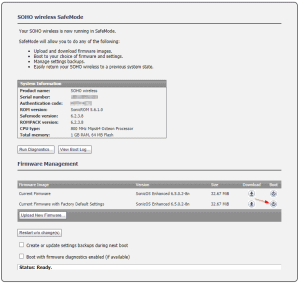
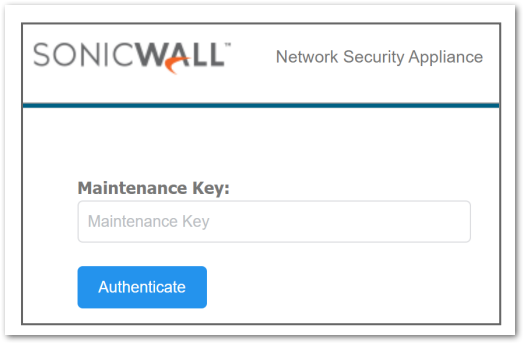
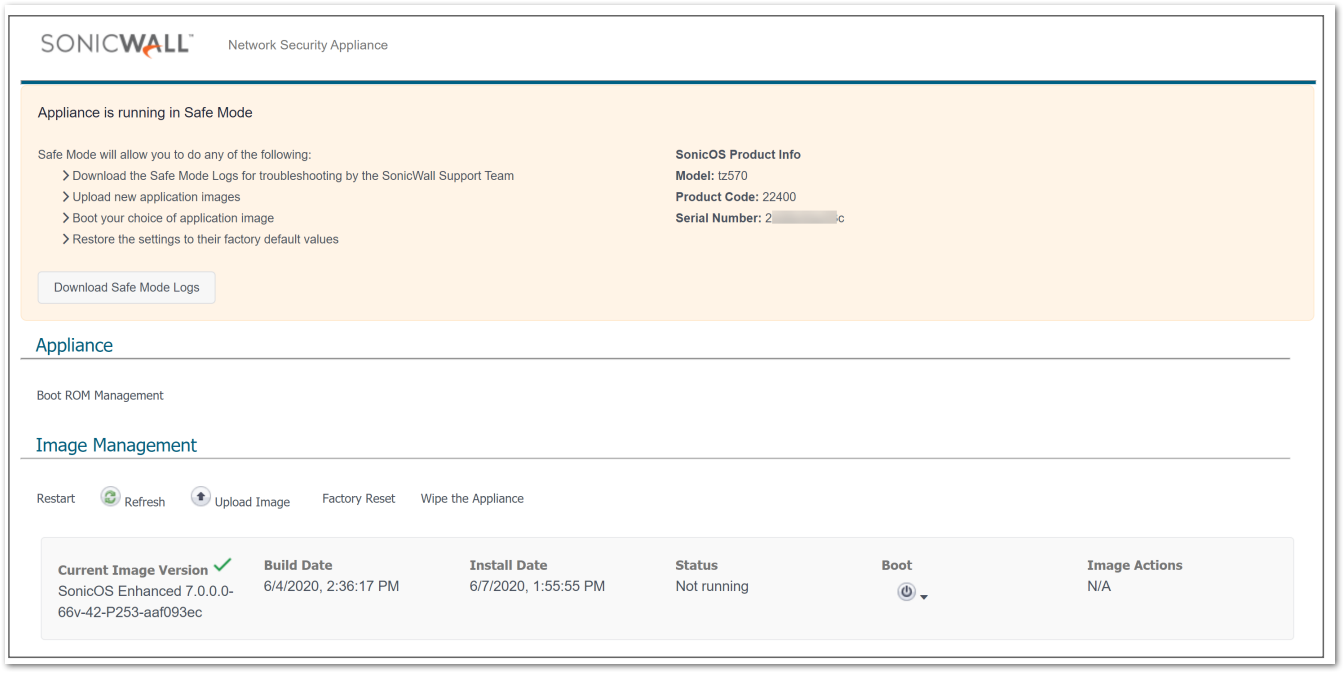

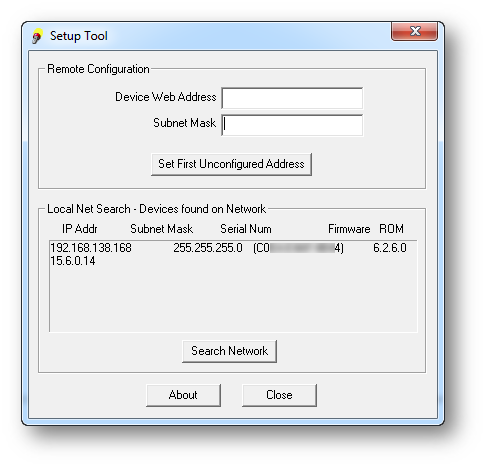
 EXAMPLE:192.168.168.2 with subnet mask of 255.255.255.0.
EXAMPLE:192.168.168.2 with subnet mask of 255.255.255.0.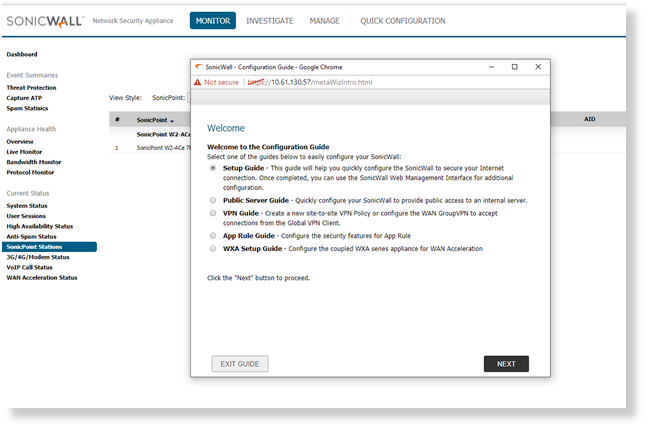
 TIP: If physical connection has been established but the user is unable to access the management interface try doing a ping to the IP address 192.168.168.168 from the computer.
TIP: If physical connection has been established but the user is unable to access the management interface try doing a ping to the IP address 192.168.168.168 from the computer.